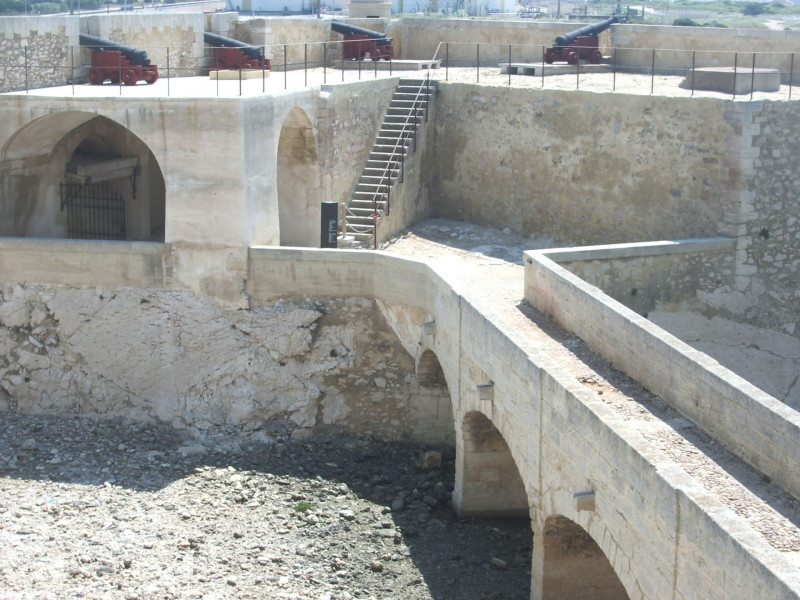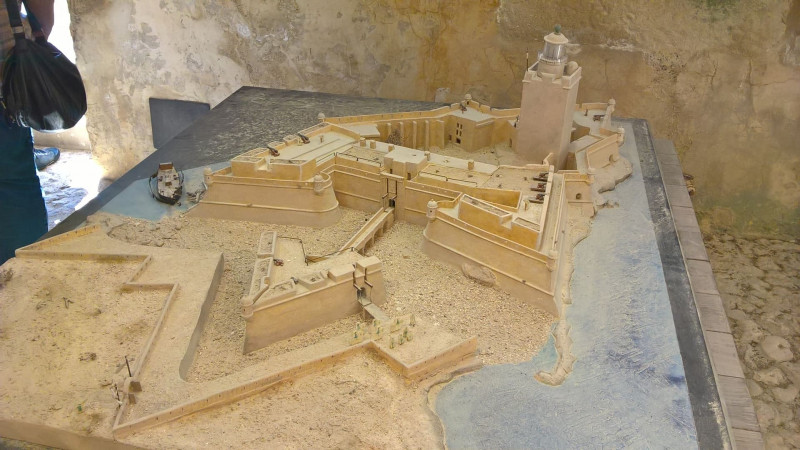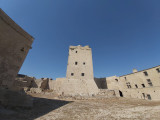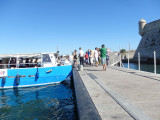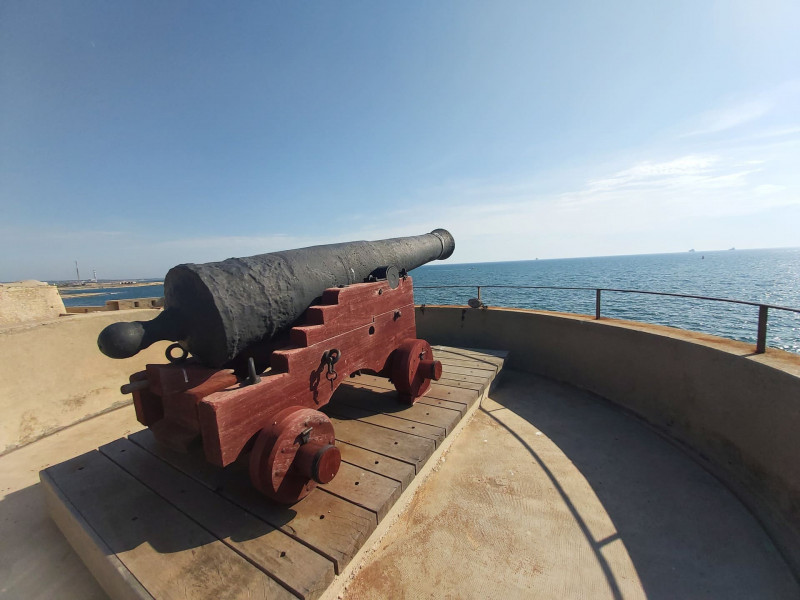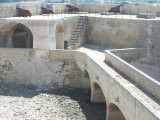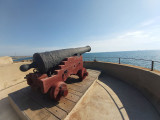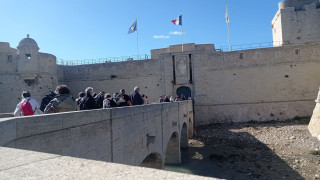Fort de Bouc
Historic site and monument Military Patrimony FortPresentation
Since the Middle Ages, it has guarded this passage between the Gulf of Fos and the Etang de Berre. Due to its strategic position for maritime trade and control of the region, the Fort de Bouc had a dual function, both a defensive structure and a beacon.
From the beginning of the Middle Ages, this area of the Caronte pond was hotly contested by the powers involved: the Count of Provence, the Archbishop of Arles, the Viscount of Marseille, the Porcellets and the cities of Marseille and from Arles. Depending on the alliances, it is the subject of transfers, exchanges and takeovers.
The tower which currently remains dates from the end of the 12th century. It has long been given the name "castrum massiliense" (in Latin) and "castel marsilhes" (in Provençal): Marseille castle.
At the end of the 12th century, Marseille asserted its power to the detriment of viscounts elsewhere. It protects its maritime commercial interests through a comprehensive coastal surveillance system. Bouc Island interests her but she is not the only one. The Count of Provence also asserted his authority and settled on the Island of Martigues in 1226.
A century later, Queen Jeanne had all the rights she possessed over her subjects in the Viguerie of Aix and in particular those of the Island, Jonquières and Ferrières recognized. We learn that the Island of Bouc depends on the Island of Martigues, and therefore it belongs to the Count and the Countess. It is indeed the inhabitants of the Island who provide the men necessary for the fort's garrison.
In 1444, there was only one medieval tower which was used by Charles of Anjou (lord of the place at that time) to secure Marseille. He then built the Tour de Bouc, in parallel with the Tour Saint-Jean in Marseille. This tower is 26 meters high. At its summit, the lighthouse offers a range of 25 kilometers. It was electrified in 1936, then automated in 1998. It became solar in 2019.
In 1536, Andrea Doria attacked the sides of Provence. Fort de Bouc, defended by the martegales, held firm. Ensuring the mouth of the Etang de Caronte, the Etang de Berre and the Tour de Bouc during the Wars of Religion was one of the concerns of the King of France. Until 1652, the Tower was the subject of struggles (sieges, captures, etc.). It will also serve as a prison for high-ranking figures such as Laurent de Coriolis (President of the Parliament of Aix), opponent of Richelieu's policies.
The Fort de Bouc prison had a regional reputation since people almost never left it. It was a state prison where the enemy was locked up without trial, by simple order of the King. Laurent de Coriolis was locked up there for 10 years and then died there in 1644.
The Tour de Bouc will also take part in the coastal surveillance system in 1632. From the La Ciotat lighthouse, to the Tour de Bouc, each guard lit his fagot to signify that there were no invaders. If the enemy was spotted, the watchtower had to signal two fires and consecutively, all the other places had to do the same. The revolutionary period revived this tradition which made Fort de Bouc one of the privileged points for controlling the passage of enemy ships, most often English.
In the 17th century, the Fort as a whole, the two bastions (one to the South and one to the North), the standing bridge and the half-moon were built. The Fort de Bouc will remain essentially the same on the outside but its interior arrangements will evolve over the centuries.
Under the authority of the Government of Provence, in 1726, the Provençal coasts were divided into nine captaincies. La Tour de Bouc will occupy a key position there. Around forty men occupy the Fort permanently. There is notably a major - commander, a chaplain, a storekeeper, a surgeon - major as well as a company of Invalides. In times of war, the Fort can accommodate up to 100 people in different rooms: barracks, guardhouse, governor's quarters, officers' lodge, canteen, tower and chapel.
You will be able to discover the complete history of Fort de Bouc and the use that was made of these places during the guided tours offered by the Martigues Tourist Office.
The tower which currently remains dates from the end of the 12th century. It has long been given the name "castrum massiliense" (in Latin) and "castel marsilhes" (in Provençal): Marseille castle.
At the end of the 12th century, Marseille asserted its power to the detriment of viscounts elsewhere. It protects its maritime commercial interests through a comprehensive coastal surveillance system. Bouc Island interests her but she is not the only one. The Count of Provence also asserted his authority and settled on the Island of Martigues in 1226.
A century later, Queen Jeanne had all the rights she possessed over her subjects in the Viguerie of Aix and in particular those of the Island, Jonquières and Ferrières recognized. We learn that the Island of Bouc depends on the Island of Martigues, and therefore it belongs to the Count and the Countess. It is indeed the inhabitants of the Island who provide the men necessary for the fort's garrison.
In 1444, there was only one medieval tower which was used by Charles of Anjou (lord of the place at that time) to secure Marseille. He then built the Tour de Bouc, in parallel with the Tour Saint-Jean in Marseille. This tower is 26 meters high. At its summit, the lighthouse offers a range of 25 kilometers. It was electrified in 1936, then automated in 1998. It became solar in 2019.
In 1536, Andrea Doria attacked the sides of Provence. Fort de Bouc, defended by the martegales, held firm. Ensuring the mouth of the Etang de Caronte, the Etang de Berre and the Tour de Bouc during the Wars of Religion was one of the concerns of the King of France. Until 1652, the Tower was the subject of struggles (sieges, captures, etc.). It will also serve as a prison for high-ranking figures such as Laurent de Coriolis (President of the Parliament of Aix), opponent of Richelieu's policies.
The Fort de Bouc prison had a regional reputation since people almost never left it. It was a state prison where the enemy was locked up without trial, by simple order of the King. Laurent de Coriolis was locked up there for 10 years and then died there in 1644.
The Tour de Bouc will also take part in the coastal surveillance system in 1632. From the La Ciotat lighthouse, to the Tour de Bouc, each guard lit his fagot to signify that there were no invaders. If the enemy was spotted, the watchtower had to signal two fires and consecutively, all the other places had to do the same. The revolutionary period revived this tradition which made Fort de Bouc one of the privileged points for controlling the passage of enemy ships, most often English.
In the 17th century, the Fort as a whole, the two bastions (one to the South and one to the North), the standing bridge and the half-moon were built. The Fort de Bouc will remain essentially the same on the outside but its interior arrangements will evolve over the centuries.
Under the authority of the Government of Provence, in 1726, the Provençal coasts were divided into nine captaincies. La Tour de Bouc will occupy a key position there. Around forty men occupy the Fort permanently. There is notably a major - commander, a chaplain, a storekeeper, a surgeon - major as well as a company of Invalides. In times of war, the Fort can accommodate up to 100 people in different rooms: barracks, guardhouse, governor's quarters, officers' lodge, canteen, tower and chapel.
You will be able to discover the complete history of Fort de Bouc and the use that was made of these places during the guided tours offered by the Martigues Tourist Office.
Public car park near the town hall pier (La Halle de Martigues car park)
Labels
- categories :
General information
- Services :
- 10 yrs old min
- Client profile :
- Groups
- Environments :
- Town location
- In an industrial/commercial zone
- Visits :
- Average individual visit length (minutes) : 180
- you can visit it
- Average group visit length (minutes) : 180
- Style :
- Classical
- Period :
- 11th C
Services, Tours, Activities and entertainment
- Individual tour services :
- Guided inividual tours obligatory
- Group tour services :
- Guided group tours on request
- Guided group tours obligatory
- Visit :
- Guided tours
- Services :
- On-line reservation
About
Access by sea, only by reservation at the Martigues Tourist and Convention Office. Fort de Bouc is geographically enclosed in the installations of the oil port of Lavéra. As a result, its attendance and use are subject to various specific constraints.
Contact
Fort de Bouc
Chemin de la Jetée
13500
Martigues
Phone : +33 4 42 42 31 10
- Spoken language(s) :
Tarifs
Guided tours, by reservation only at Martigues Tourist Office.

Destination
Fort de Bouc
Chemin de la Jetée
13500
Martigues
GPS coordinates
Latitude : 43.393538
Longitude : 4.98631
Marseille Provence: Airport / Aerodrome 20 km
Martigues Lavéra station: Train station at 4 km
Martigues Lavéra station: Train station at 4 km
We also suggest...
Take a trip back in time and discover the history of Fort de Bouc from the Middle Ages until today. Envious of the Kings and Counts of the time, the ...
Saturday 21 February 2026
14:00 to 17:00



